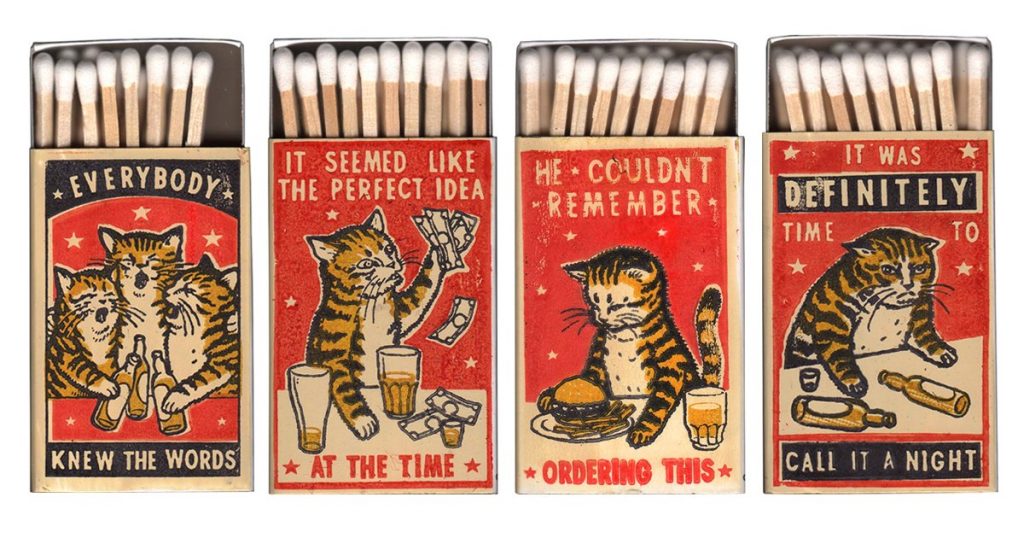 There is nothing I like about January. It starts with the worst holiday in the year and ends with ice five inches thick covering every corner of your property. Usually. It’s actually been a warmish winter with only a couple of sharp snaps into the -20C region. But it’s still January so I hate it. This week sucked on a number of levels: coronavirus, Kobe and even a cat named Jinx.* Yet is will be March four weeks next Monday. So that is good. Did you need me to explain how the calendar works? Is that why you come here? Probably not. Not that you need me to explain anything else… and yet I do… week after week. Like this =>
There is nothing I like about January. It starts with the worst holiday in the year and ends with ice five inches thick covering every corner of your property. Usually. It’s actually been a warmish winter with only a couple of sharp snaps into the -20C region. But it’s still January so I hate it. This week sucked on a number of levels: coronavirus, Kobe and even a cat named Jinx.* Yet is will be March four weeks next Monday. So that is good. Did you need me to explain how the calendar works? Is that why you come here? Probably not. Not that you need me to explain anything else… and yet I do… week after week. Like this =>
I didn’t see much about beer in the news, frankly, but someone forgot they drove onto a ferry near here so it wasn’t all about zippo – but then I did see that photo up there from Lars’s trip to a museum in Oslo:
Saw this in Oslo Historical Museum today: the Tune stone, 4th century. Raised in memory of Wodurid, “the bread lord”, by his three daughters, who brewed the funeral ale.
There is more in Wikipedia Norske-style. I can’t read a word of it but it’s still really interesting. I did notice that Norwegian for “log in” is “logg inn” which is really, you know, a bit lazy on their part.
And there was that “the sky is falling!” article on the craft beer industry in what is called our national newspaper… except isn’t really. But I really liked one thing in it, this stat about the US craft beer market:
…major brewers have acquired the equivalent of 7 million to 8 million barrels of production as they purchased previously independent companies and added them to their rosters. That’s a significant shift in a roughly 25-million-barrel industry…
So one-third of craft is now macro. And macro-craft and Sam Adams is more than half of craft. Which is weird. But exactly as I suspected…
And Beth just had to remind us that we are coming up to the second anniversary of glitter beer which come right before the second anniversary of the end of glitter beer. And she noted the diversity diversion trend applies to craft beer.**
Plus Jordan got some regional state-run media attention this week with his recreation of an 1830s old ale from what was York, Upper Canada but is now Toronto, Ontario:
The recipe was put together from notes in a diary by William Helliwell — the brewer at Todmorden Mill in the 1820s and 30s. Todmorden Mill was located at the bottom of Pottery Road. “The great thing is that all of the brewing details, all the detail that makes the recipe for this beer is sprinkled throughout that diary,” St. John told CBC News. “He’s not recording it because he’s keeping track, he’s recording it because it’s just part of his day-to-day life. He’s really more interested in the girl next door.”
Wag.
And Mudge semi-fisked the stats about UK pubs losses/gains including this assertion of what really is the obvious:
A few years ago, Pete wrote an angry blogpost in which he called racism over the suggestion that had made that, in some areas, the increasing Muslim population had been a major factor in the decline in pub numbers. However, it was pointed out in the comments that this wasn’t racism, but a simple question of fact. If the proportion of people in the population who don’t drink alcohol, especially in public, increases, then inevitably the demand for pubgoing will decline. He later deleted the post, and now accepts the point in his article.
Note #1: quaff…
1510s (implied in quaffer), perhaps imitative, or perhaps from Low German quassen “to overindulge (in food and drink),” with -ss- misread as -ff-. Related: Quaffed; quaffing. The noun is attested by 1570s, from the verb.
Note #2: -able…
…there are 3 rules that control how the able/ible
suffix is used.
1. In original Latin words, the suffix was -bil- and the vowel was
the thematic vowel of the verb.
2. In new Latin words where the thematic vowel was no longer
apparent, the suffix was reanalyzed as -ible.
3. Words that are formed in English use -able.
Result: Robin wins.
Yup:
The weird thing about the ‘return of bitter’ narrative is that at no point in the last decade has bitter been remotely difficult to find on sale.
Dr J noticed a person doing a good job:
The beertender at the new spot in Terminal E at CLT is personable AF and knows her tap list back and forth. Just watched her upsell 3 separate parties who asked Coronas/Bud Lights. Beer politics aside, she’s out here doing work and pouring lovely beers in clean glass. Props…
Day Bracey wrote about putting together a fest in Allentown but not that Allentown:
We’re talking Allentown, Pittsburgh, a predominantly black “redeveloping” neighborhood between Mount Washington and the South Side. By “redeveloping,” I mean “pre-gentrified.” They have a coffee shop and folks are actively looking to open a brewery there. Once that happens, the flood of white people will be inevitable and Pittsburgh will have a Lawrenceville 2.0, or rather an East LIBERTY 3.0. What better way to combat this than by filling the streets with 5,000 people who may be interested in gentrifying responsibly, with investments in both the people and the buildings?
Neato. And finally, Katie watched a cooper bash a firkin and made a tiny movie.
So not all that much news this week. More anecdote, perhaps. Some tableau, even. Mainly maybe mise en scène. If you want more of that and some other stuff, too, don’t forget to check in with Boak and Bailey’s most Saturdays except for last week and weeks like last week, at the OCBG Podcast on Tuesdays and sometimes a mid-week post of notes from The Fizz as well. And sign up for Katie’s weekly newsletter, too. There’s the AfroBeerChick podcast now as well! Plus the venerable Full Pint podcast.
*Note: Googling “Polk” and “Jinx” delivers some weird results, not all of which relate to unfortunate U.S. Presidential luck in the 1840s.
**As we see in diverting misery-level funding.










 The other day, I read that The Metropolitan Museum of Art in New York had freed thousands of images from their intellectual property right shackles for free and unrestricted public
The other day, I read that The Metropolitan Museum of Art in New York had freed thousands of images from their intellectual property right shackles for free and unrestricted public 
